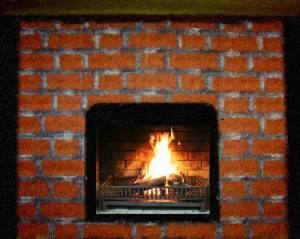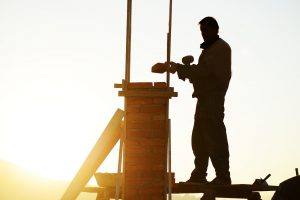Regular chimney cleaning helps your chimney to function efficiently and safety, boosting the chimney’s function and reducing the risk of chimney fires. But how often do you need a professional chimney sweep? It’s an important question to which there is no one right answer. However, understanding how often you should sweep your chimney is important to keep your fireplace in top condition.
Why is Chimney Cleaning Important?
Chimney cleaning helps to remove buildup of ash, soot, dust and debris from inside your chimney, and most importantly helps remove creosote. Creosote builds up on the inside of chimneys and flues when wood fuel is burned. The less efficiently wood is burned, the more quickly creosote builds up. This makes it difficult to determine when a fireplace needs cleaning based on usage alone. One fire where the wood is burned inefficiently may contribute much more creosote than many fires where the wood is burned properly. Creosote is highly flammable and can trigger a chimney fire if left to build up to more than 1/4 inch. Regular cleaning helps to remove buildup such as creosote and keep your chimney safe from fires.
How Often Should You Clean Your Chimney?
Because the degree of creosote buildup can vary depending on how wood is burned, it can be tricky to work out just how often you should have your fireplace cleaned.
Ideally, it’s best to ask a chimney professional to provide a chimney inspection to gauge the level of creosote buildup and determine whether a clean is necessary.
Otherwise, as a rule of thumb the National Fire Prevention Association and the Chimney Safety Institute of America both recommend a chimney should be cleaned and inspected for structural soundness and integrity at least once a year.
If I Haven’t Used My Fireplace Much, Can I Avoid Cleaning It?
Because creosote buildup can occur after relatively few fires where wood has burned incompletely, using your fireplace rarely isn’t necessarily a good reason to avoid cleaning it. Fireplaces can also deteriorate structurally due to water or impact damage and become clogged with debris or even pests, so it’s best to schedule chimney inspection and cleaning at least once a year at the minimum.
Should My Chimney Be Cleaned More Frequently?
If you know that your fireplace is used often and your fireplace burns wood inefficiently, you may need to have your chimney cleaned more often. Chimney cleanings should be aligned with creosote buildup, so in chimneys where creosote buildup is happening more rapidly, cleanings should be more regular. This can also be the case where certain types of wood are burned, such as pine, which naturally releases more creosote. If you use your fireplace very frequently, or are aware that your fireplace is burning fuel inefficiently, it is advisable to consult with your local chimney expert about how often your chimney sweeps should be.
Regular chimney cleaning and inspection helps to keep your fireplace safe, tidy, strong and chimney fire free. Talk to your local chimney sweep about how often your chimney should be cleaned based on your individual needs.






